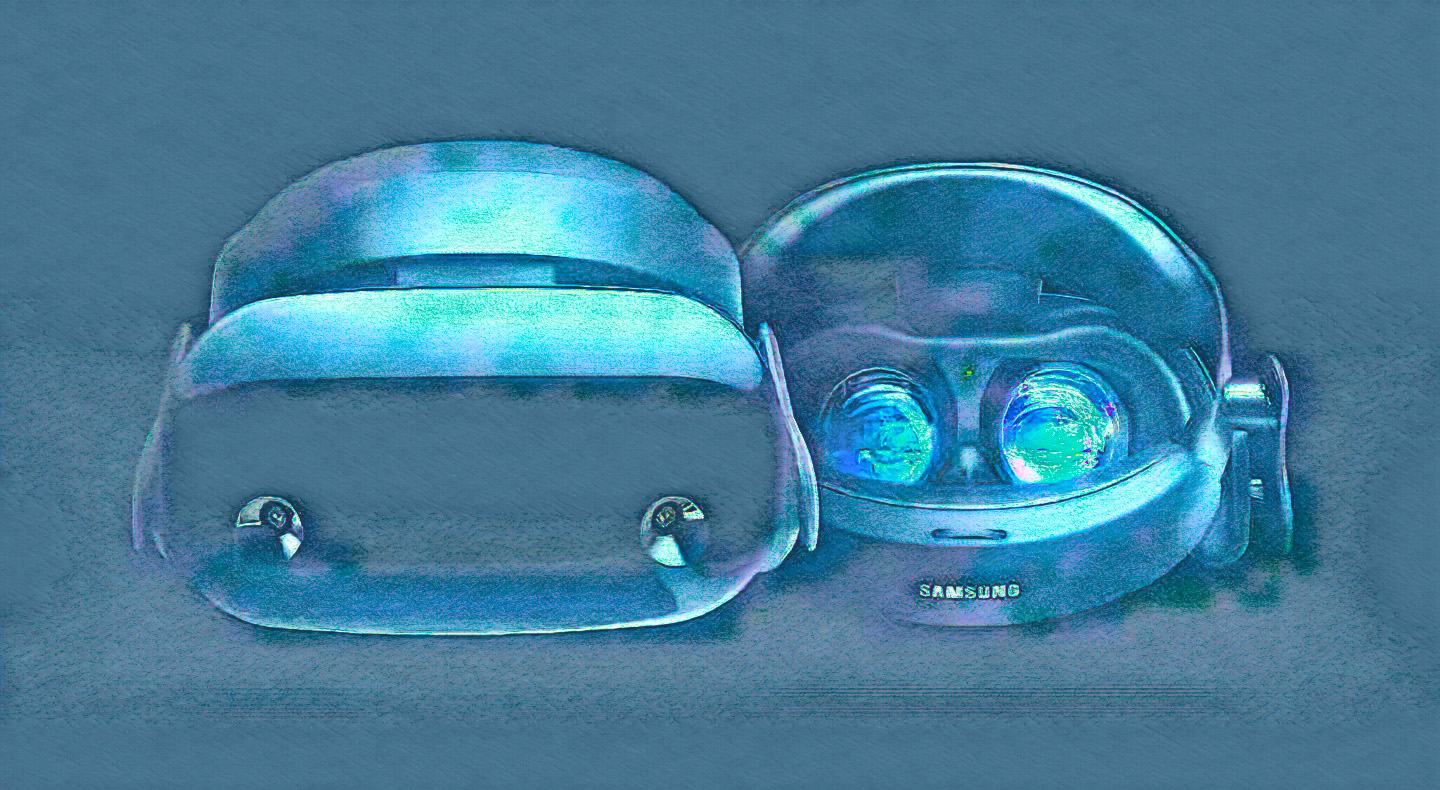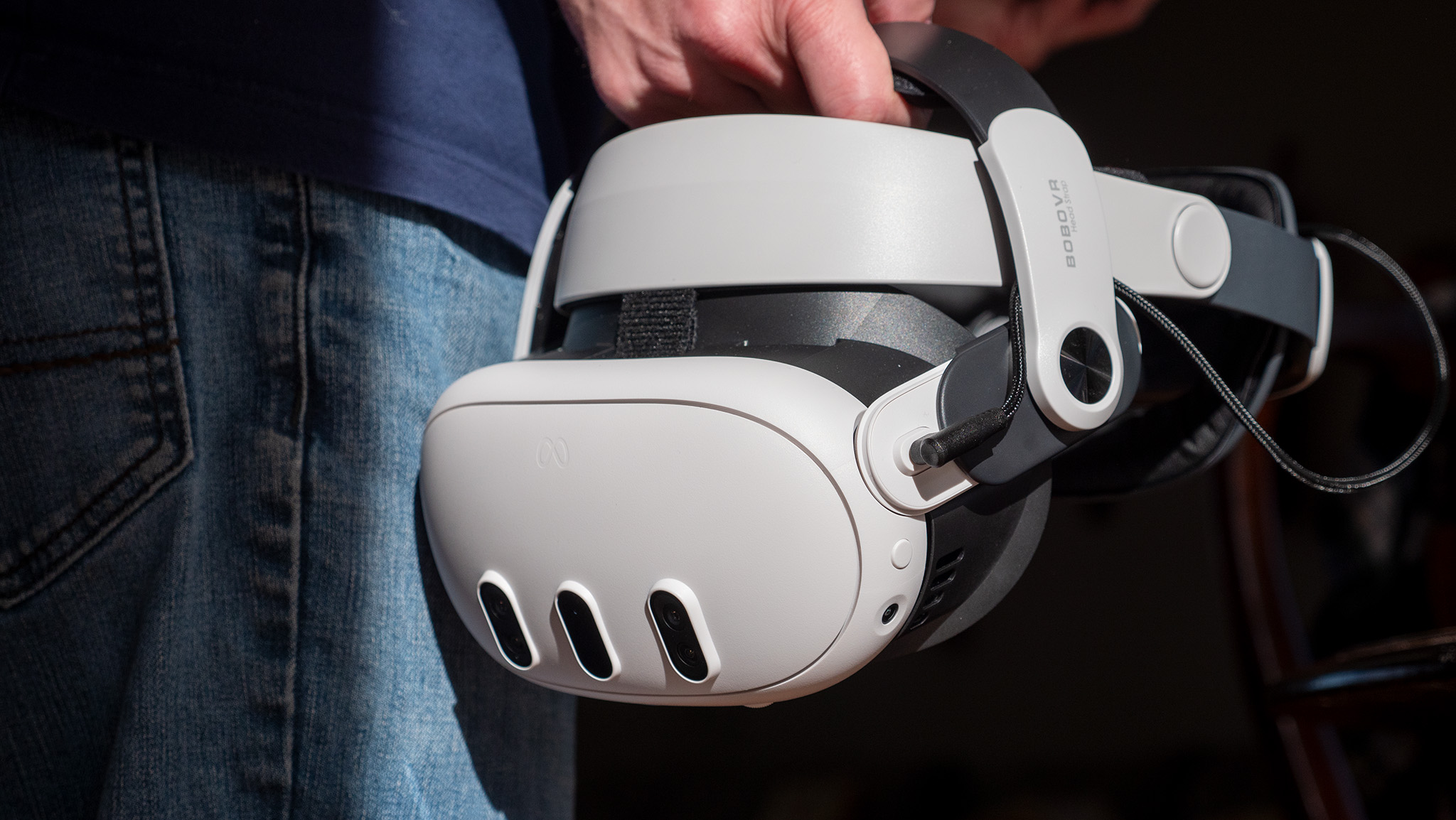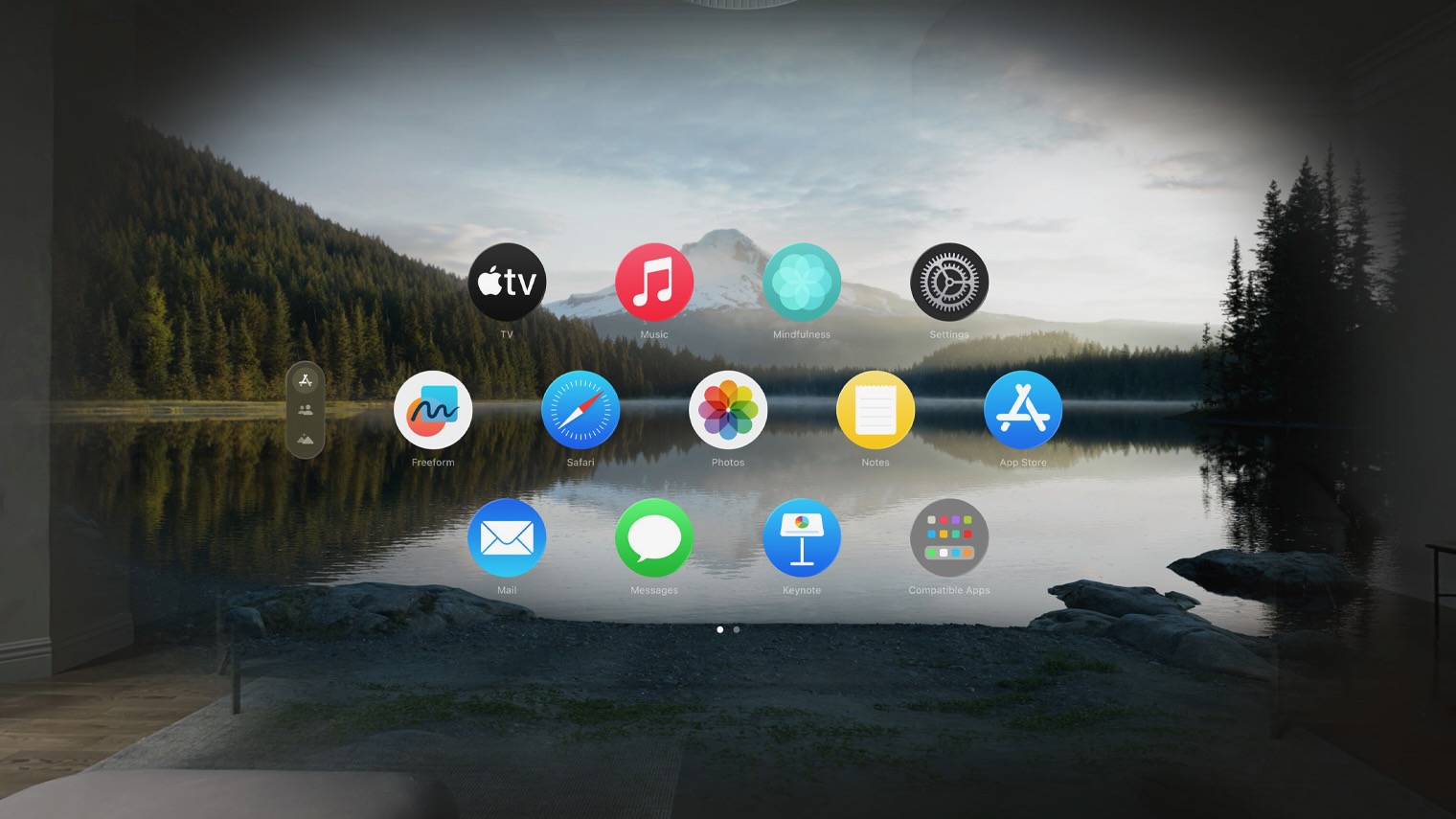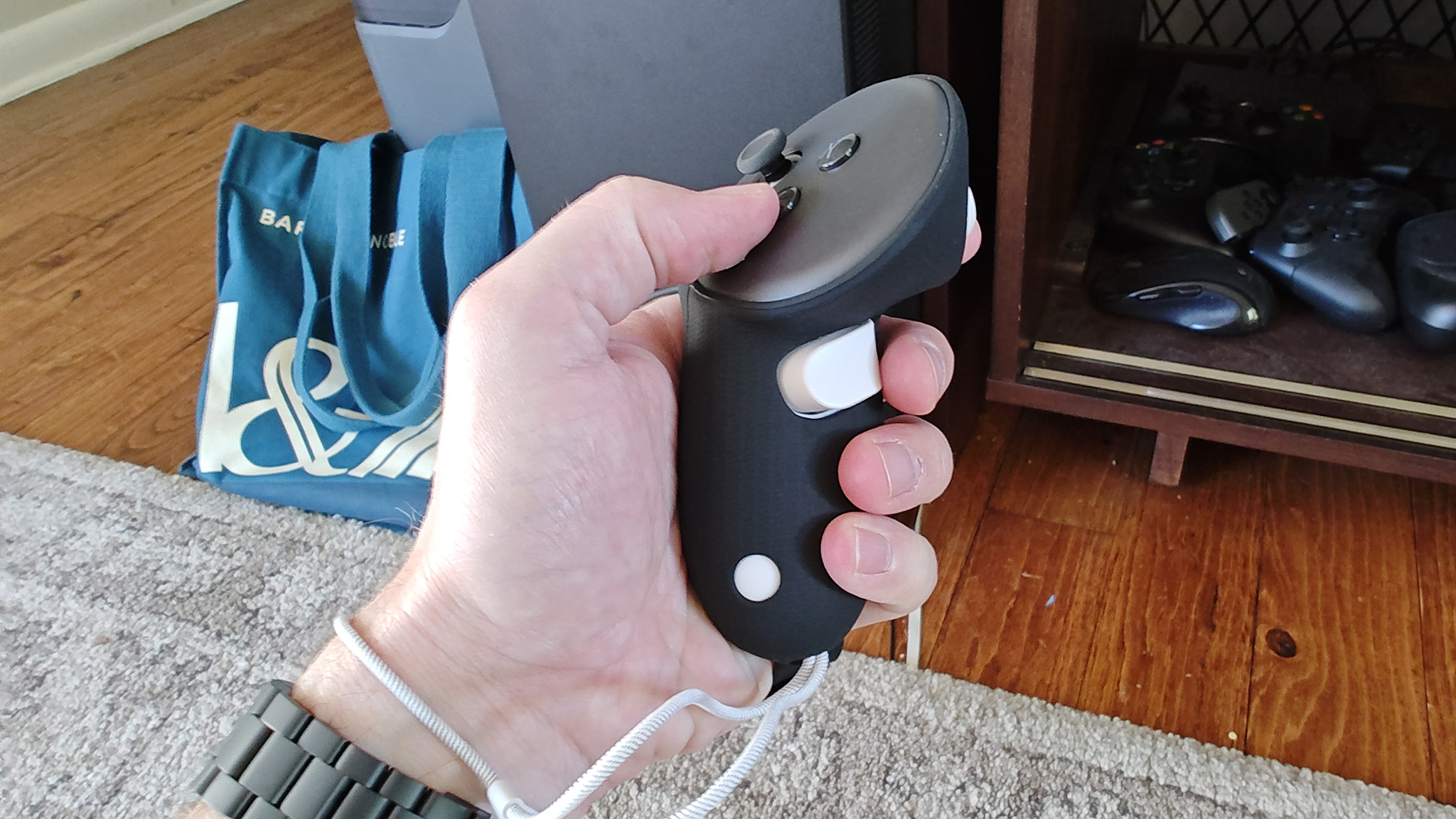Here's why Samsung can actually beat the Apple Vision Pro
Samsung dominates Android. Now it wants to dominate spatial computing.

It's clear from where I'm standing right now that Apple is fully intending to channel its old "Think Different" ad campaigns with the Apple Vision Pro. Nearly everything the company is doing with Vision Pro flies in the face of industry norms and accepted lingo, with Apple even going so far as to bar reviewers from using the term "VR" or "headset" when describing the product.

In his weekly column, Android Central Senior Content Producer Nick Sutrich delves into all things VR, from new hardware to new games, upcoming technologies, and so much more.
To Apple and its branding folks, Apple Vision Pro is a spatial computer designed to turn your chair into a digital workspace or entertainment Mecca. Sure, it can play VR games but Apple isn't designing it for that, and it's clear from the rumors that Samsung is aiming to play right along with this concept with the Samsung XR headset.
While we have little official information about the headset so far, we know that Google, Samsung, and Qualcomm are all working closely together to make a product that can compete with Vision Pro on a level we might not have expected this early in the spatial computing timeline. The question is, how successful will Samsung be at emulating — or besting — what Apple has designed?
The horsepower index

Apple's announcement that the Vision Pro would utilize the laptop-grade M2 chipset was a huge surprise for many reasons. Apple's M-series chipsets are renowned for their performance, but that performance comes at a cost for a mobile product: battery life.
While you'd never know this when using a MacBook, an Apple M2 chipset draws roughly 3x as much power as the Snapdragon 8 Gen 2 inside a Meta Quest 3. Considering how poor the Quest 3's battery life is — roughly 2 hours on a single charge — there's little chance the M2 inside the Vision Pro will be running as fast as it does on a full-fledged MacBook Pro.
While we'll have to wait for the final hardware to judge the performance, we do know that Apple rates the Vision Pro's battery life at the same 2 hours per charge that the Quest 3 sees.
But Samsung has a weapon in its sheath to fight Apple on that front: the Qualcomm Snapdragon XR2+ Gen 2.
Get the latest news from Android Central, your trusted companion in the world of Android
The Apple M2 chip is more powerful but it also draws 3x the power of a competing Qualcomm chip.
It's the same chipset Sony is using in its new enterprise-grade XR headset that features 4K microdisplays. While it's only a little bit faster than the XR2 Gen 2 in the Meta Quest 3, it supports higher-resolution displays and can run more cameras simultaneously.
Those tertiary features are going to be what helps companies like Samsung compete with the Vision Pro because, based on what we know right now, it's likely the M2 chipset in the Vision Pro could be quite a bit faster than what Qualcomm is delivering.
Samsung can make up for the power difference with quality displays and cameras.
But the performance difference between these headsets might be mitigated so long as the experience is just as good. Two of Apple Vision Pro's biggest advantages over existing standalone VR headsets like the Meta Quest are the high-resolution displays and crystal clear passthrough camera quality.
If Samsung can outfit its XR headset with ultra-high-resolution 4K per-eye displays and passthrough cameras with smartphone-quality sensors, it'll likely sport the same wow factor that Apple's headset delivers.
Apple will sell the Vision Pro starting at $3,500 on February 2, while Samsung is said to be targeting closer to a $1,000 price tag when it launches its XR headset later this year. That doesn't give us much hope in Samsung pushing the envelope quite as much as Apple, but it might just be "good enough" for the massive price difference.
It's the apps, stupid

None of the performance matters if there's nothing to do in-headset, and that's why Apple's strategy with Vision Pro apps is so sound. In the simplest of terms, Vision Pro is an "iPad for your face." When you turn it on, you'll see the room around you and find a familiar grid of app icons floating in virtual space.
Apple says that an unbelievable 1 million+ apps will be available for Vision Pro on day one — that's in less than a month on February 2, mind you — because the spatial computer can run nearly all existing iOS apps.
It's long been accepted that iOS tablet apps are superior to most apps built for Android tablets because of developer support and Apple's design language, and that will extend easily to Vision Pro because of the headset's UX (user experience) design.
Apple is using an ingenious combination of eye-tracking and lazy hand movements to make interaction with virtual apps as effortless as possible. Check it out in the first 60 seconds of the video below.
So where does this leave Samsung and Google? Samsung was said to have gone back to the drawing board with its headset after the Vision Pro reveal, and little doubt that a huge part of that has to do with the way users interact with apps.
More than that is the number and quality of apps being interacted with. I wrote some time ago that the Meta Quest will never catch up to the Vision Pro in this area because it lacks access to the Google Play Store, but here's where Samsung can one-up Meta and match Apple at its own game.
If Google and Samsung are working together as closely as they say, there's no way the Samsung Glasses — or whatever Samsung calls its XR headset — won't have full access to the Google Play Store.
Apple Vision Pro supports over 1 million iOS apps out of the box, and Samsung's XR headset could support just as many with Google Play.
That will give Samsung a massive leg-up on any other non-Apple standalone XR headset — standalone means one that doesn't have to connect to a computer or some other device to work — as it'll have a huge app library out of the gate.
Plus, Samsung's Galaxy ecosystem is already massive and has been designed to work perfectly with other products in the Galaxy ecosystem. A Galaxy Book 3 pairs perfectly with a pair of Galaxy Buds 2 Pro and a Galaxy S23 Ultra, and I fully expect a Samsung XR headset to pair with other Galaxy products in the same way.
That means full and rich integration of apps and services between devices in a way that feels holistic and bespoke. It's an experience that'll be worthy of the price tag Samsung puts on the headset, and it means that Samsung can truly effectively compete with Apple even if it can't get a processor from Qualcomm to match the M2 pound-for-pound.
Giving serious input

Unlike basically all other XR headsets in existence, Apple isn't shipping the Vision Pro with tracked controllers. In fact, you don't even need to raise your arms to interact with objects, as I talked about earlier.
But hand tracking at this level isn't something that's easily built, especially if Samsung just went back to the drawing board during last Summer's announcement of the Vision Pro. Meta has been slowly improving hand tracking on Quest over the past five years, and it only recently got to the point where I've been comfortable using it as a regular input method for apps that support it.
I'm hoping Samsung offers users both hand tracking and tracked controller options.
Because of the sheer magnitude of machine learning and tweaking that needs to be done to do hand tracking correctly, this is an area where I can see Samsung not keeping up with Apple initially.
I have no doubts that Samsung will eventually nail the input method, but it makes me wonder if the company will ship its headset without controllers or just go with the Meta Quest method: include both controller and hand tracking options so the user can decide.
Given that Samsung tends to build products that users can customize and make their own, I'm going to assume that the company will do what it does best and offer everything and the kitchen sink for its upcoming headset.
Don't disappoint me, Samsung.

